Amidst a surging need for militant antifascist organising, Interregnum hit the streets of London to report on the antifascist demo of the 1st of February 2025.
Photography and reporting by Constantinos Tsirides, additional reporting by Interregnum
In the next chapter of the decisive antifascist demonstrations in London last August, thousands of people joined together in opposing Tommy Robinson and his supporters on Saturday, 1st of February 2025.
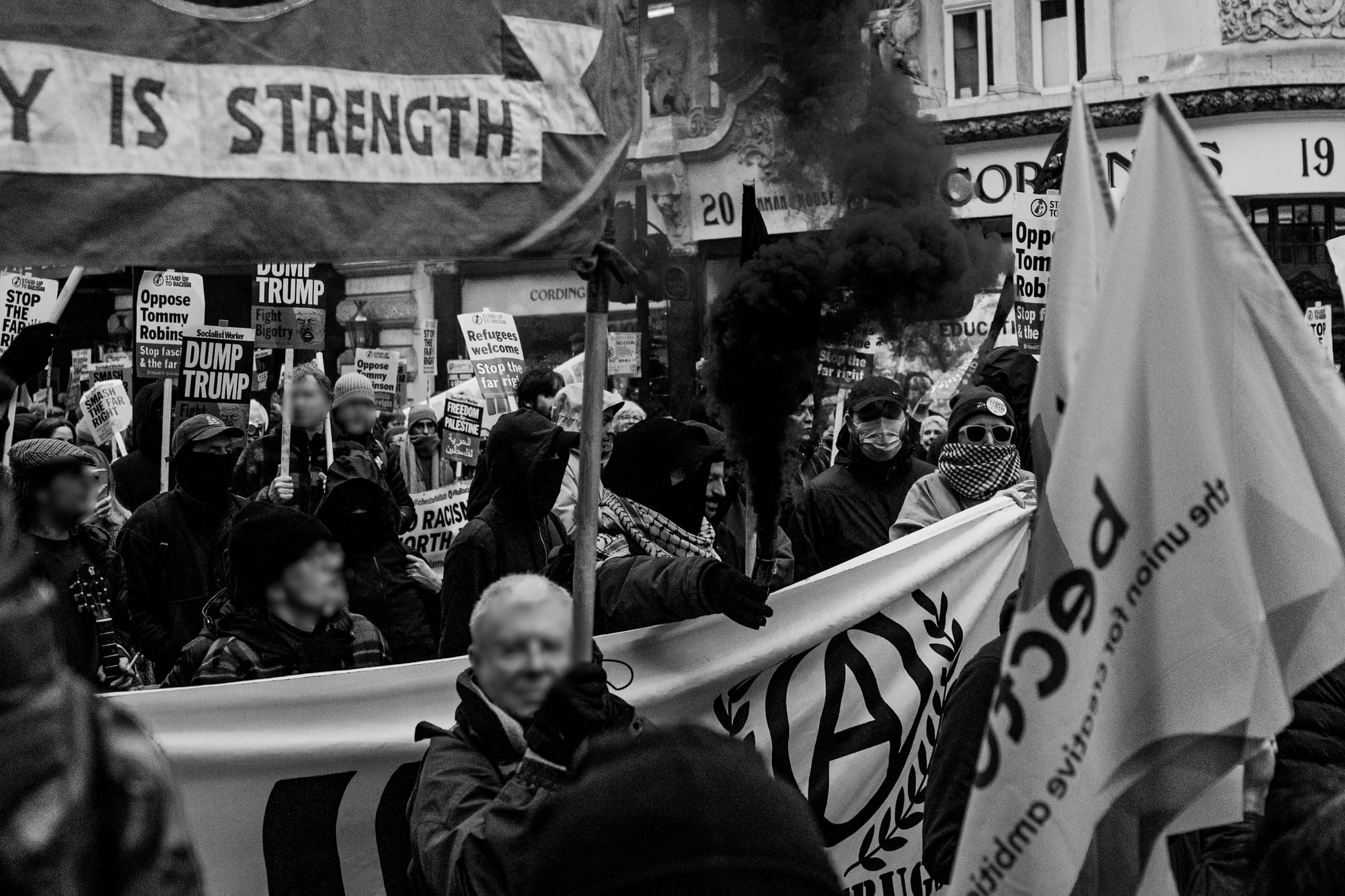
This was the first major far-right mobilisation in England since Trump returned to the US presidency, with the connections between white supremacy across the West being more prominent than ever. Indicatively, the name chosen by the far-right for their protest – ‘Unite the Kingdom’ – is reminiscent of the now-infamous 2017 ‘Unite the Right’ rally of Charlottesville which attracted supremacists, neo-Nazis, and Klansmen and resulted in the murder of antifascist Heather Heyer. This connection is further demonstrated by MEGA (Make England Great Again) hats worn by protesters.
The British far-right has been emboldened in recent months. In late July, the erroneous rumour that the Southport murderer was a Muslim migrant triggered a wave of racist riots across the UK. Even though the rumour – propagated by the likes of Nigel Farage and Tommy Robinson – was swiftly refuted, it was enough to trigger an explosion of far-right mobilisation, alongside attacks on mosques and hotels thought to be housing migrants.
These developments allow the far-right to promote their ideas more brazenly; Elon Musk’s recent Nazi salute at a Trump rally, followed by his open support for the German far-right party AfD, are but the latest examples. Tommy Robinson’s team also recently confirmed that Musk offered to pay for Robinson’s legal expenses. Beyond the realm of celebrity politics, this renewed confidence in fascist action has spilled out into our communities, with seven mosques being vandalised in London just in the month of January.
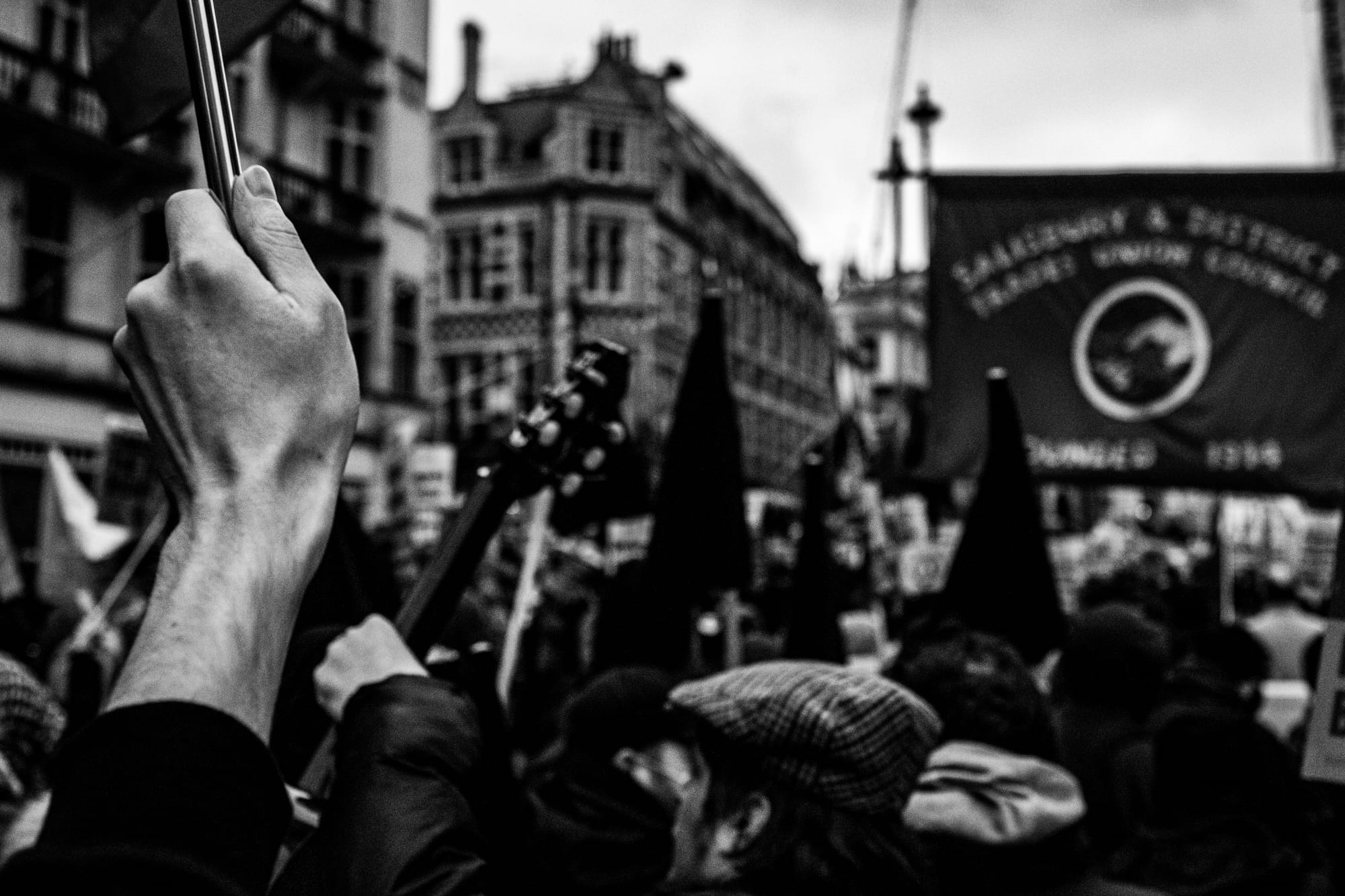
As this is all unfolding, ‘left-wing’ parties are increasingly appealing to nationalist concerns while hiding under the guise of being ‘reasonable’ or ‘realistic’. Labour Party leader and Prime Minister Keir Starmer even criticized the Tory government for not keeping immigration under control, and claimed that the previous administration ‘turned Britain into a one nation experiment in open borders’. George Galloway’s supposedly ‘socialist’ Workers Party of Great Britain, in the meantime, is openly admitting its anti-migrant stance and, on that regard, is practically indistinguishable from Reform UK.
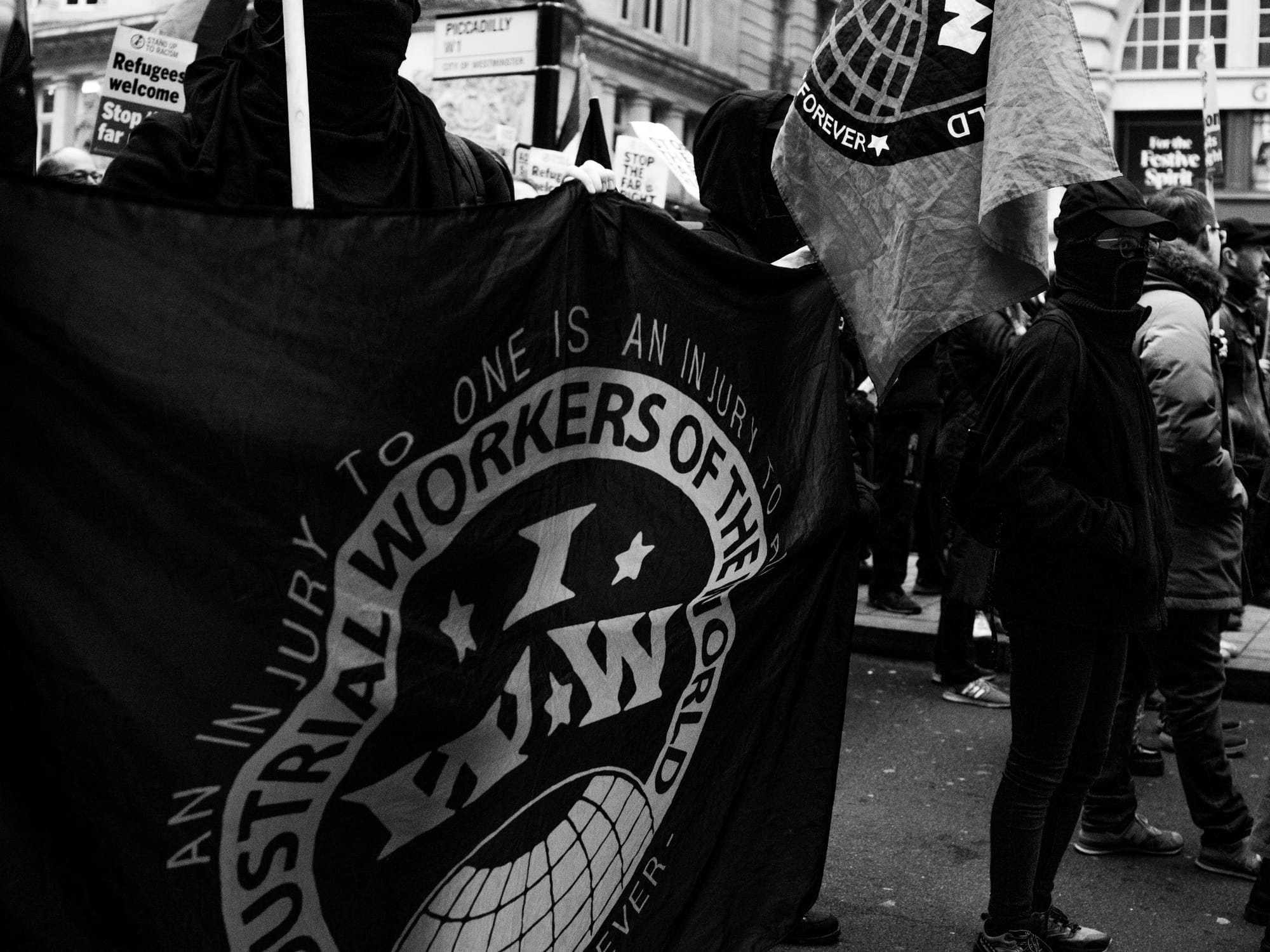
In the light of the above, Saturday’s counter-protest was a critical litmus test for the state of antifascism in Britain. While it was officially organised by Stand Up to Racism – an organisation that functions as a front group for the Socialist Workers’ Party – the protest also drew a notable presence from other parts of the left. The anarchist bloc, including the IWW, Class Struggle, and other comrades demonstrated that militant antifascism is re-emerging as a potentially significant force, beyond the confines of ossified formations such as SUtR.
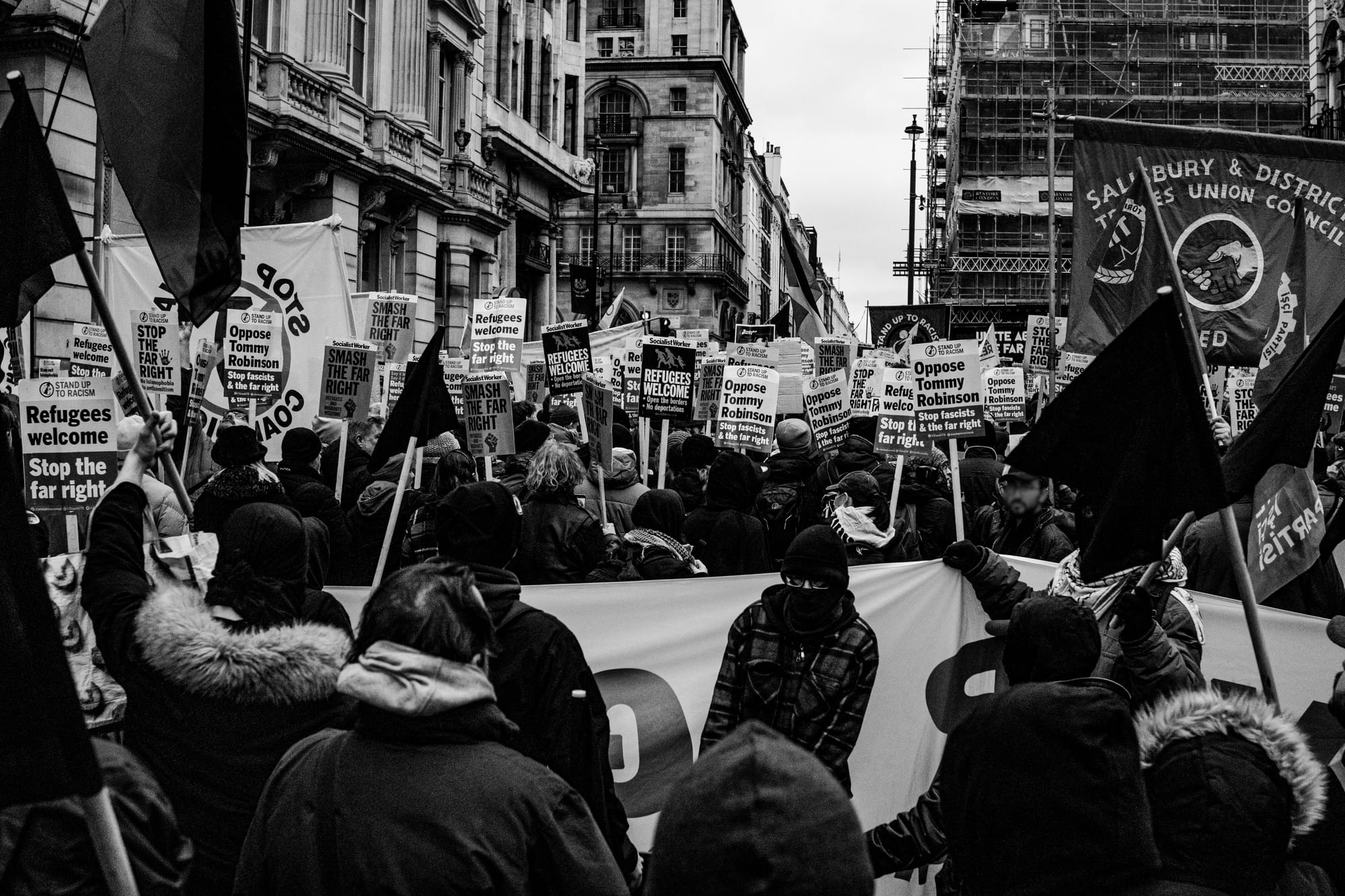
Apart from its problematic association with rape apologists, Stand Up to Racism fails to inspire a rank-and-file movement: acting as movement stewards, their organisational structure centralises power. This removes agency from people while creating a false sense of trust in the organisation, where all one needs to do to achieve liberation is to passively attend demos while donating relentlessly. Indeed, we routinely heard the claim that we should donate to SUtR ‘in order to make protests like this possible’, as if people cannot resist fascism outside the auspices of that specific structure.

The need for autonomous and liberatory alternatives in the fight against fascism is precisely why the renewed presence of the anarchist, radical left, Class Struggle, and IWW bloc was of great significance. This form of militant antifascism offers a perspective that refocuses on the power of people to organise themselves and fight against the far-right on their terms, without leaders commanding them. By doing so, it challenges the direct associations between fascism and authoritarianism, while nurturing the mentalities and tactics that we need in order to sustainably organise ourselves.
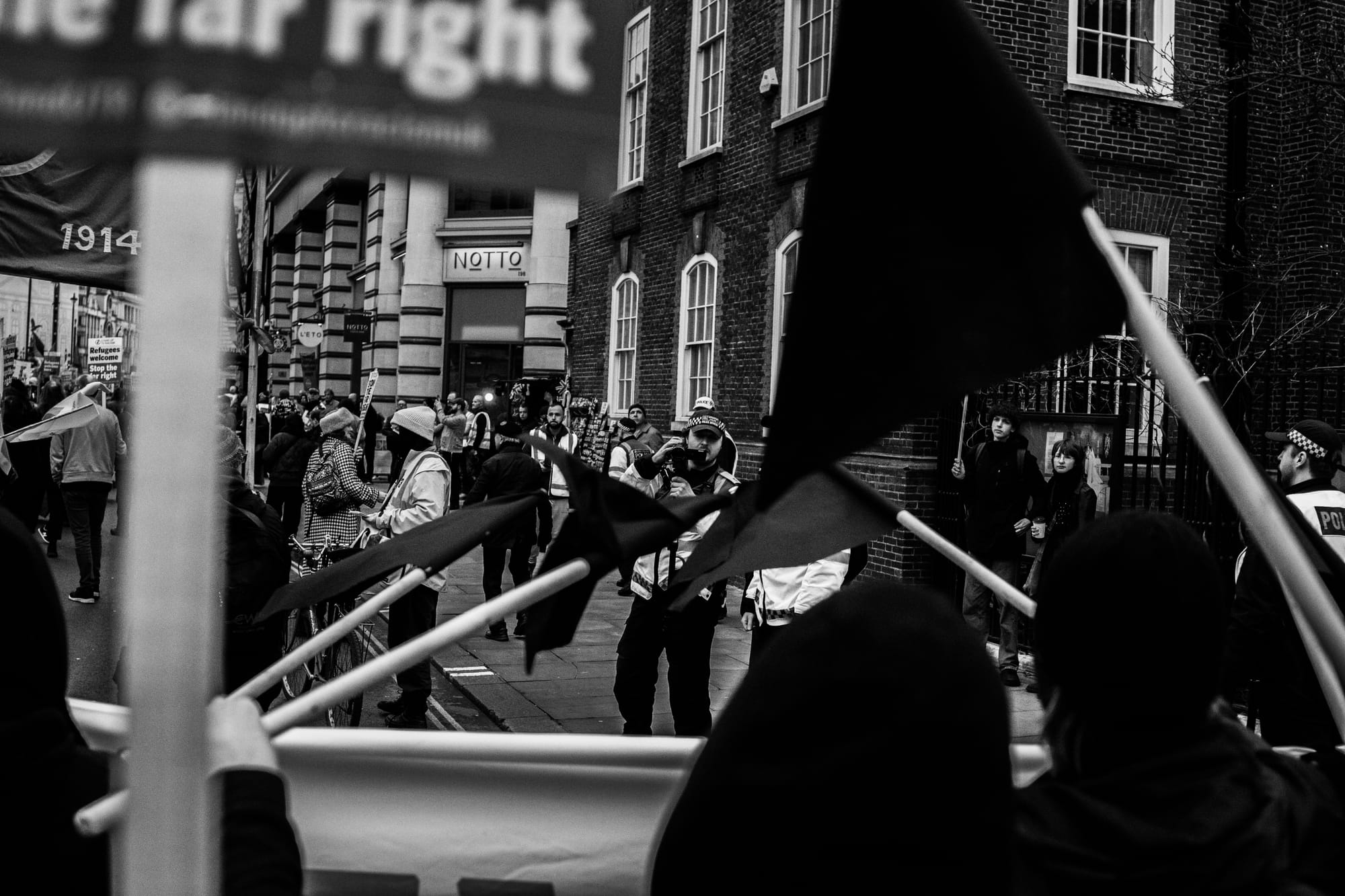
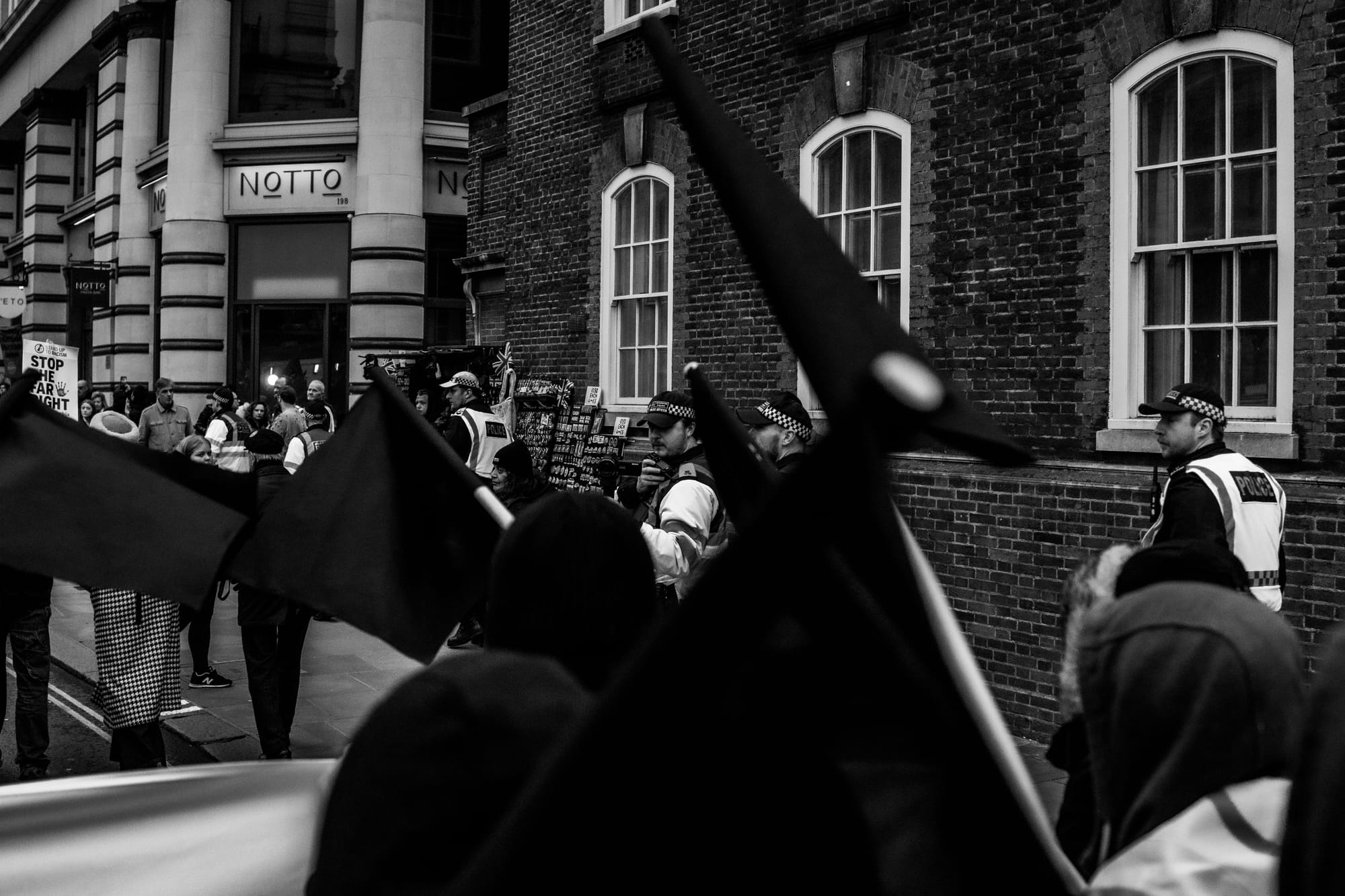
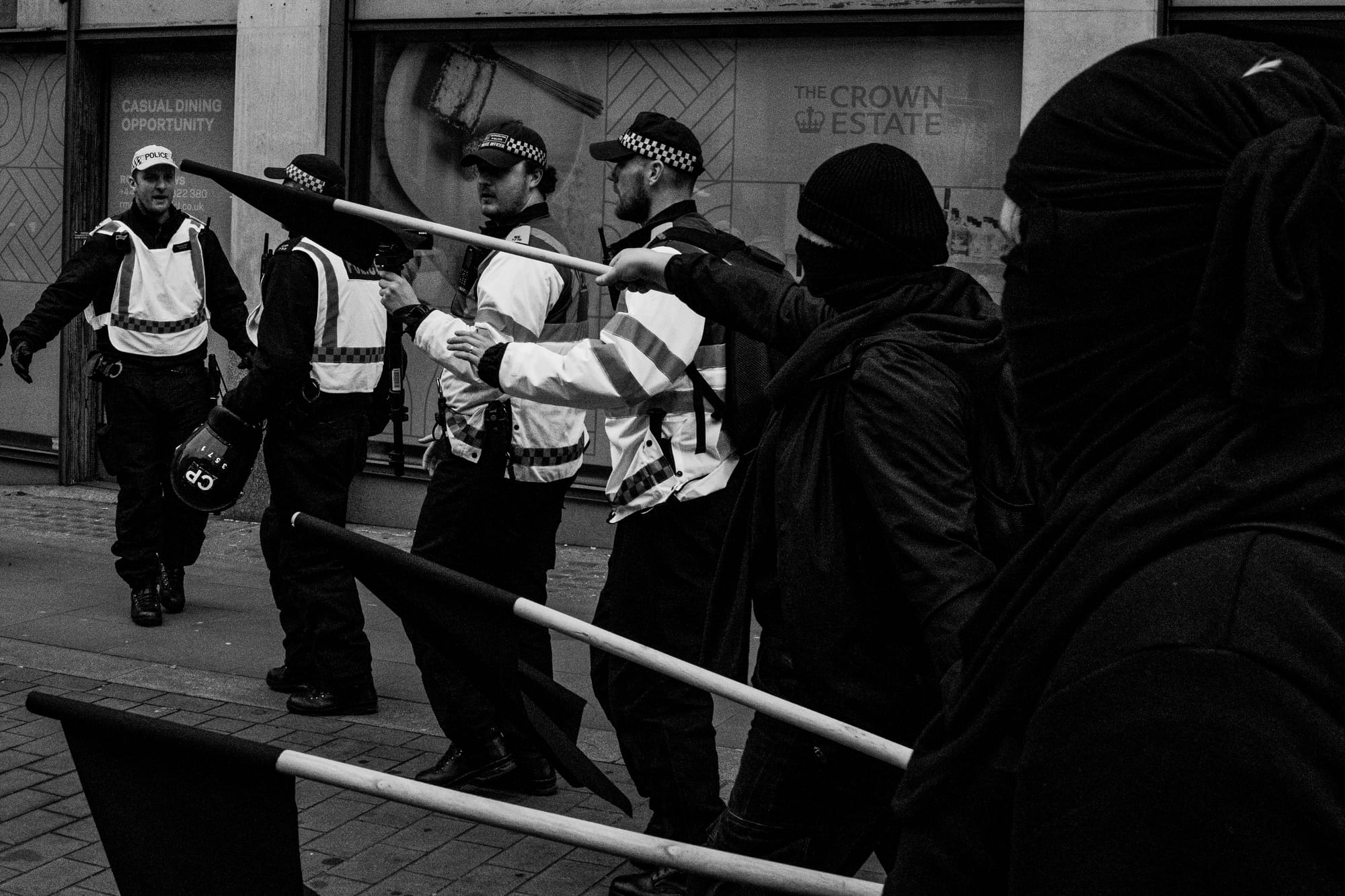
Finally, the prominent police presence surrounding the counter-protesters should be noted. Police tactics included invasive forms of surveillance like directly trying to film protesters’ faces. Despite the significant numbers that attended the antifascist demonstration, the bulk of police attention was directed towards the militant antifascist bloc, distinguished from the rest by their black flags. When protesters responded by covering police cameras with their flags, the police shoved and intimidated them, attempting to provoke arrestable reactions.
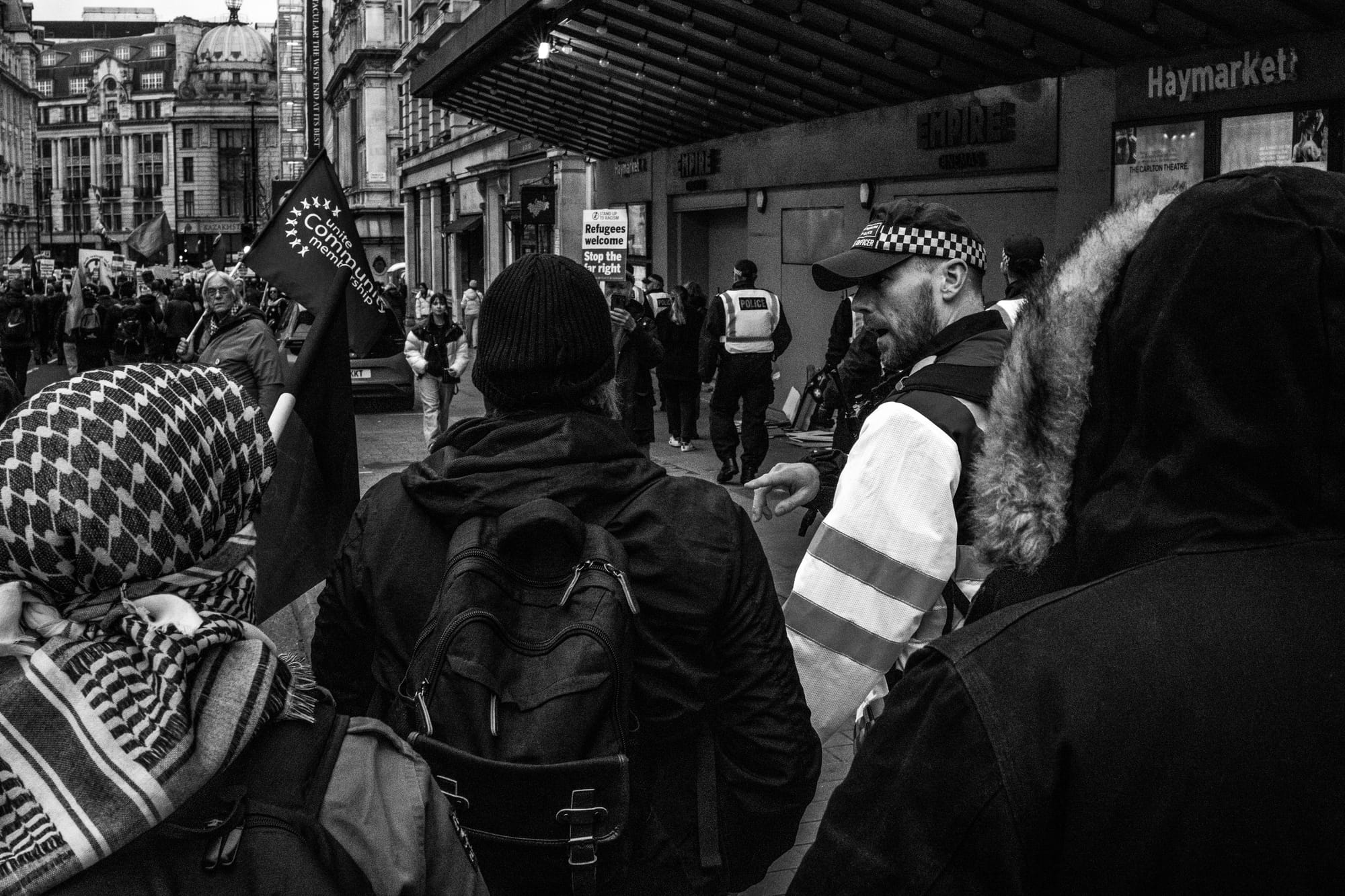
The large police presence, the increase of surveillance methods such as face recognition cameras to identify anyone attending the protest, and the use of IMSI catchers to intercept phone signals and track phone users, are more indications of the State’s focus on antifascists as a force that must be controlled. This abuse of power is important to talk about, not because it is exceptional, but because it is becoming increasingly normalised.
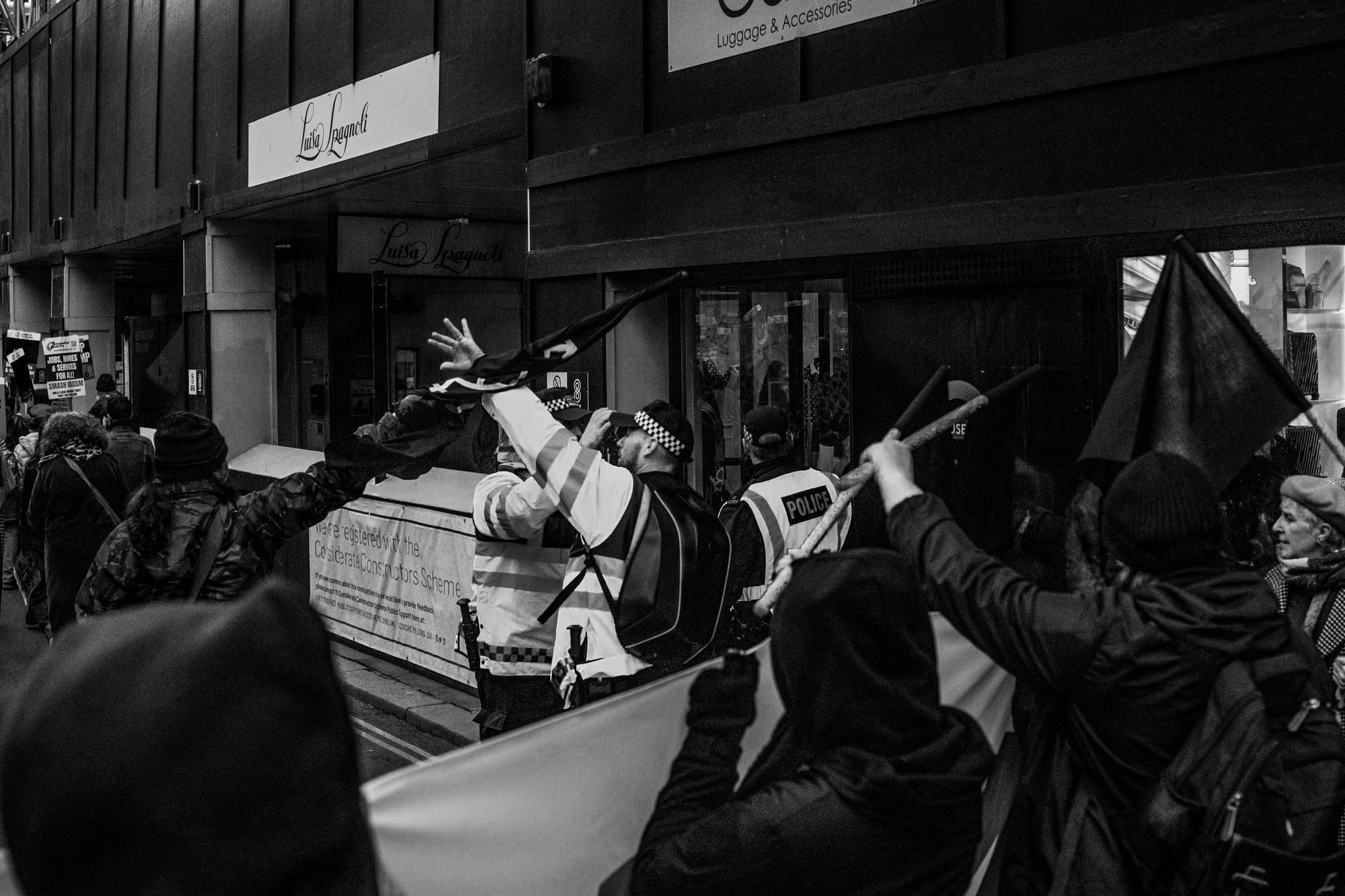
Even in the face of police provocation, the non-SUtR antifascist bloc remained resolutely disciplined and organised. Protesters moved in harmony, and swift instances of coordination between people who didn’t know each other allowed them to manoeuvre in ways that not only ensured the unity of the bloc, but also prevented the police from snatching people in their midst. While a lot of work remains to be done in order to establish a sustainable antifascist presence in England’s communities, Saturday’s demonstration was an encouraging example of antifascist encounter and resistance.
You can find resources to safely organise here and here.
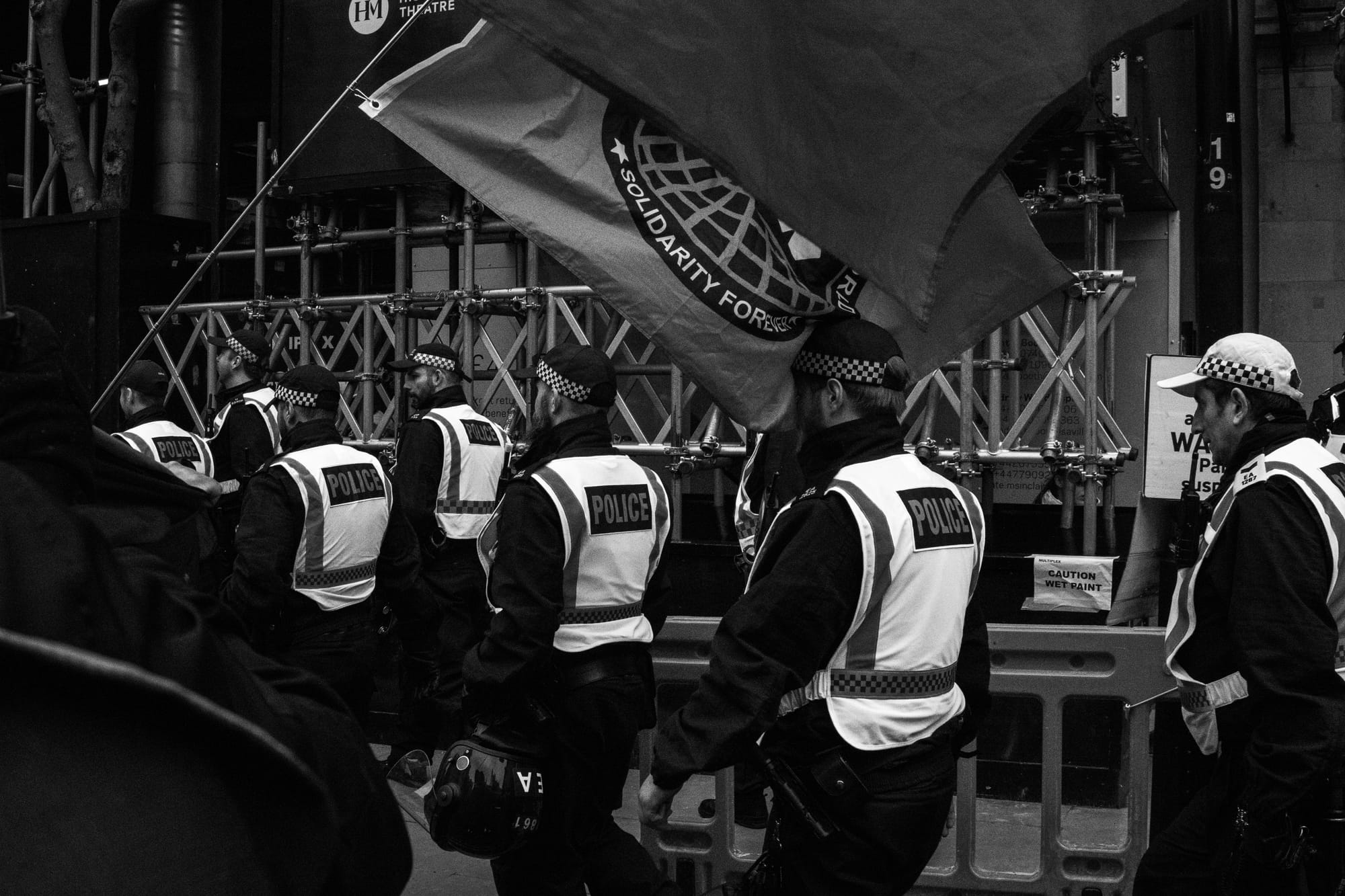
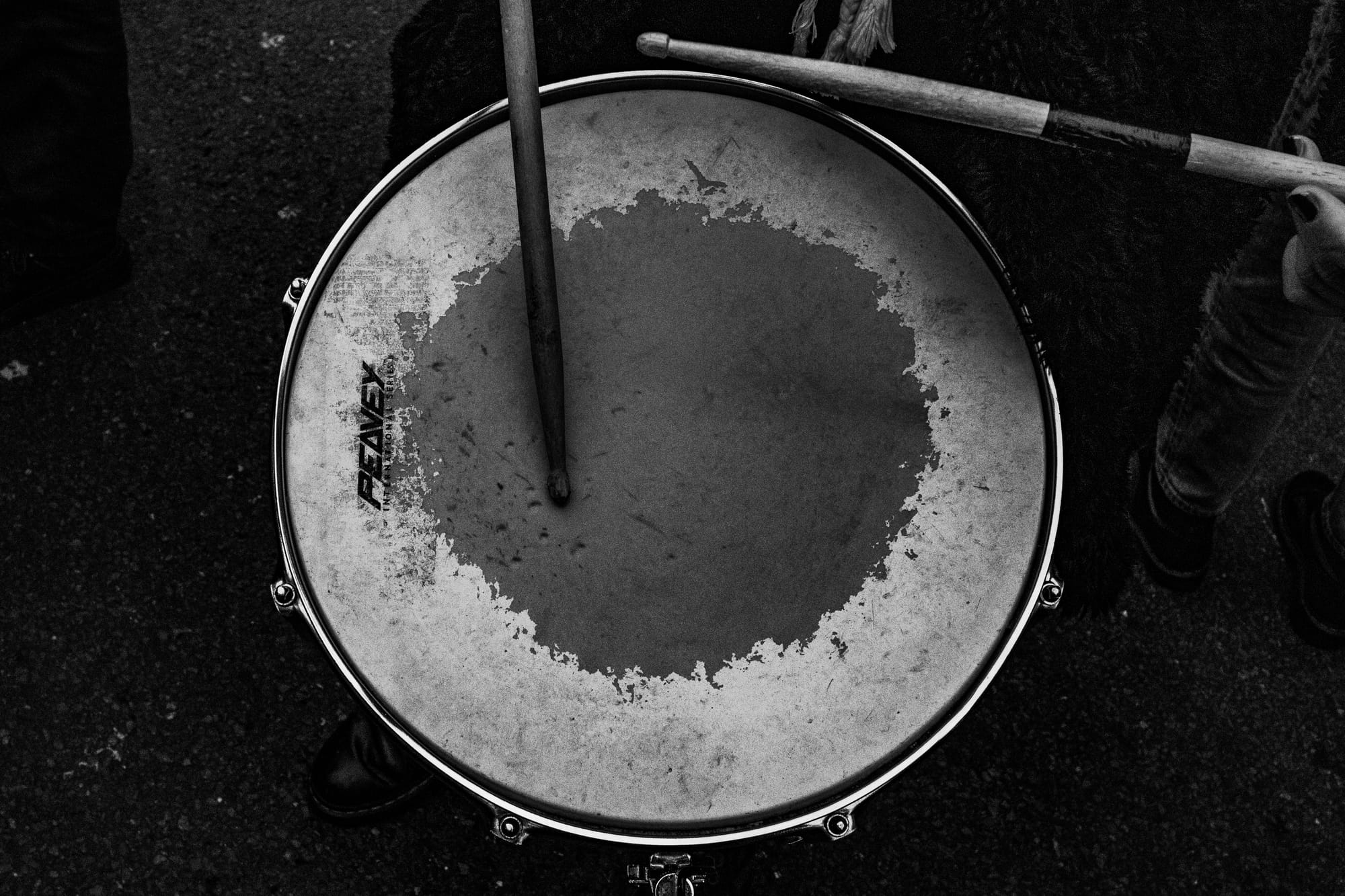
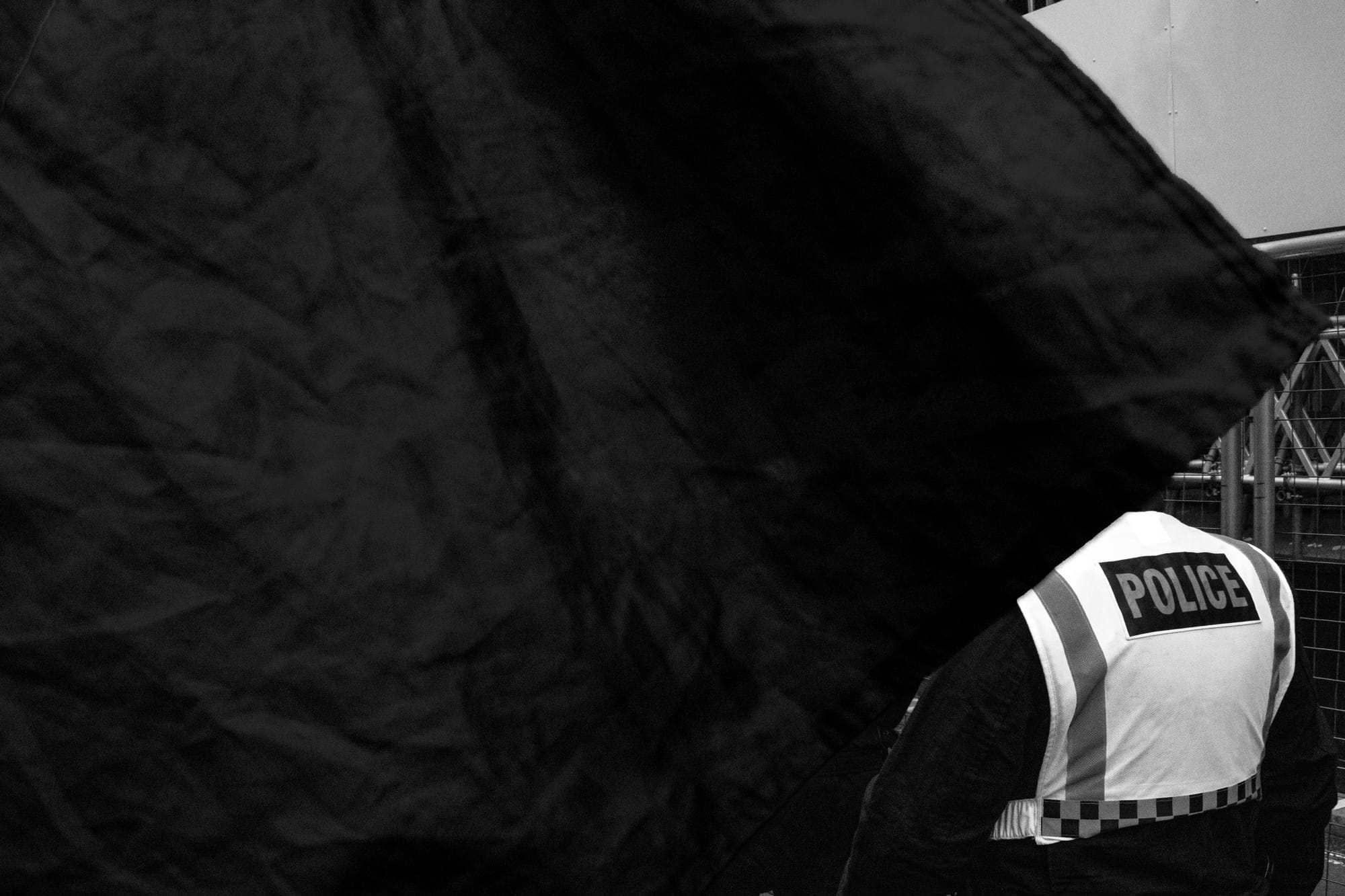

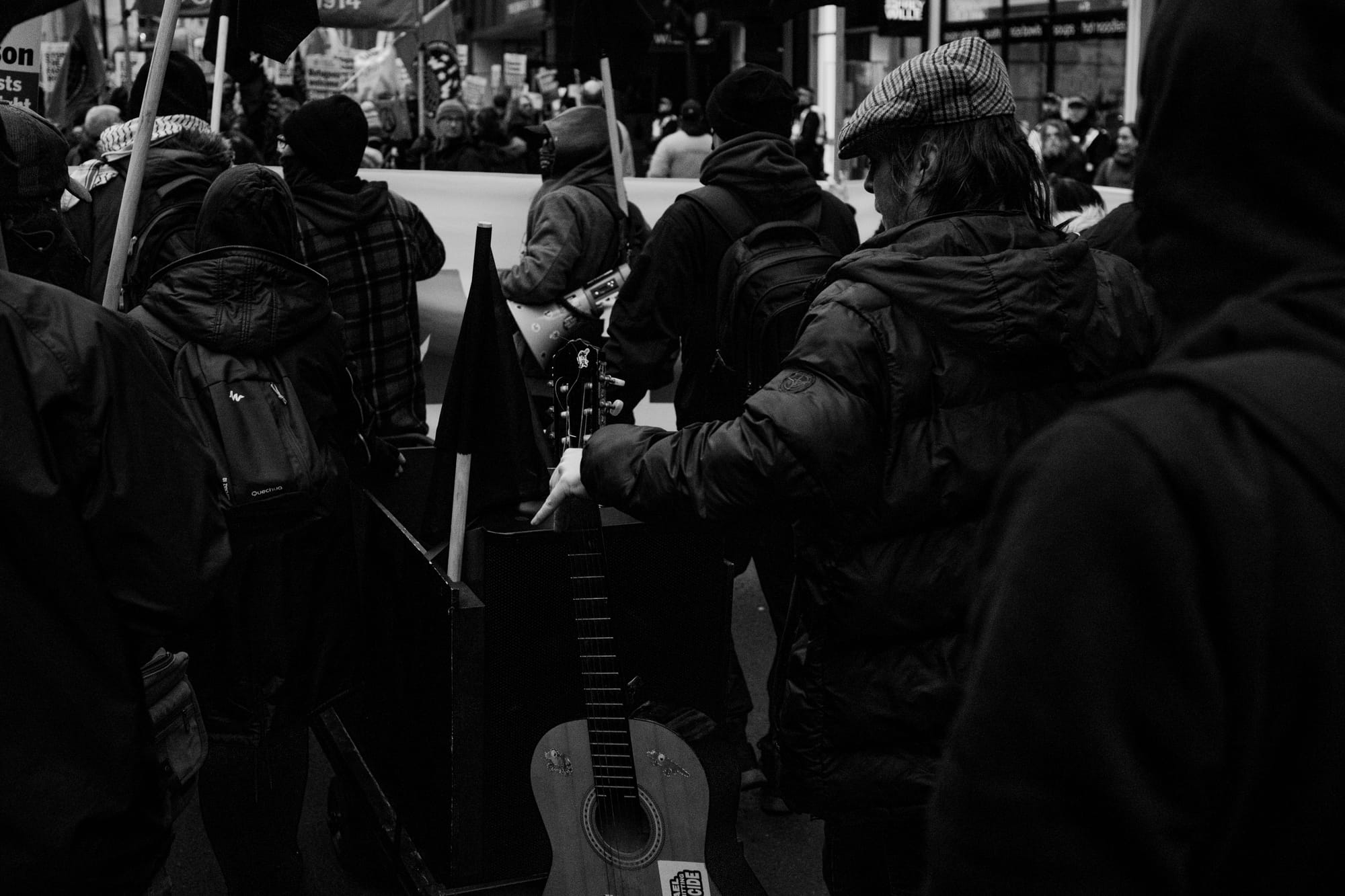
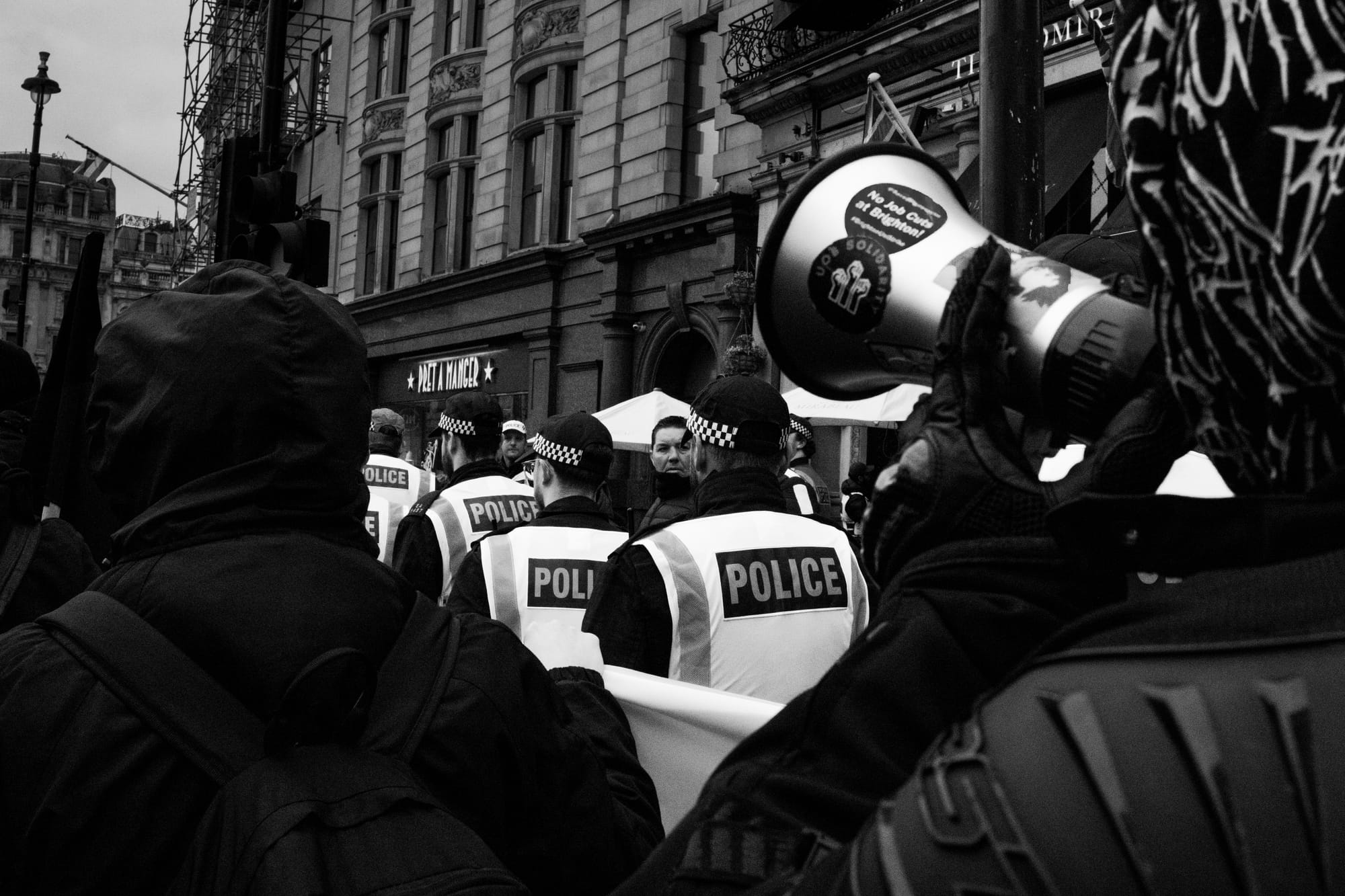
You can follow Constantinos Tsirides's photography here.


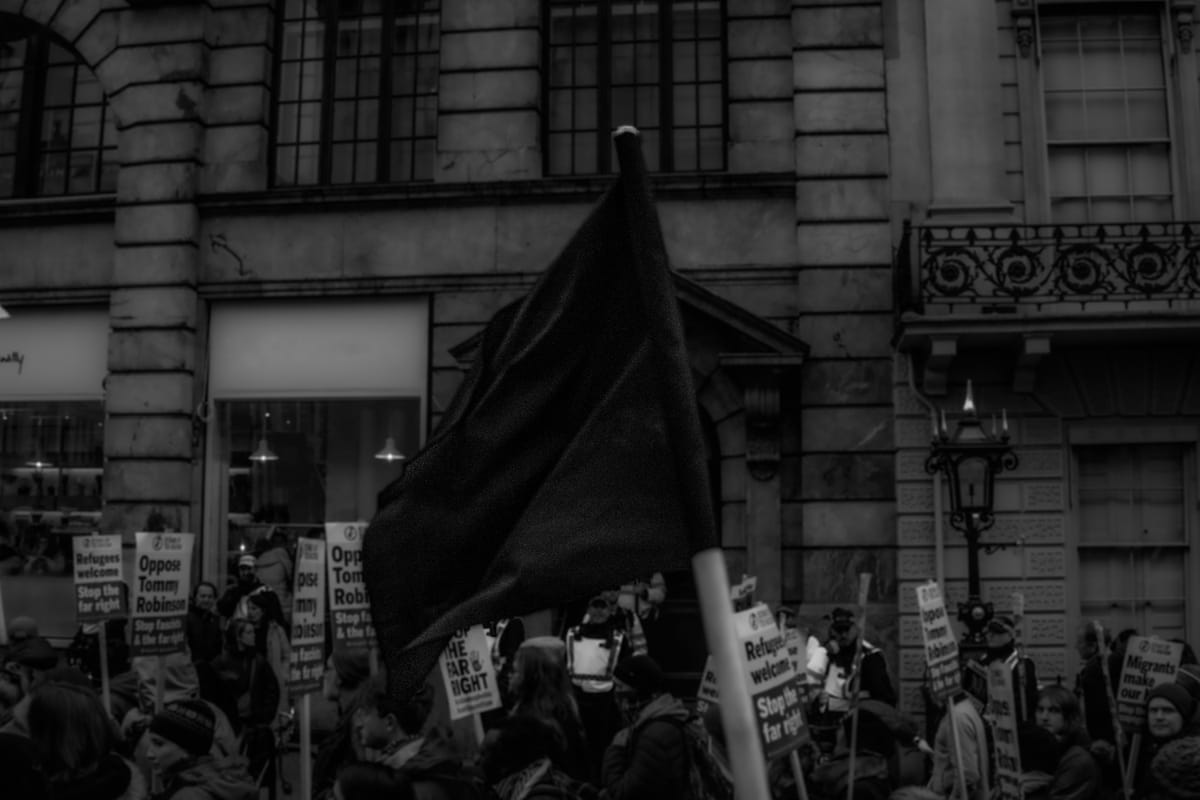

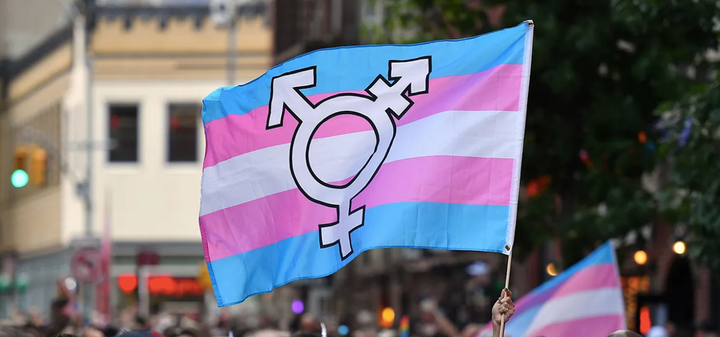

Comments ()